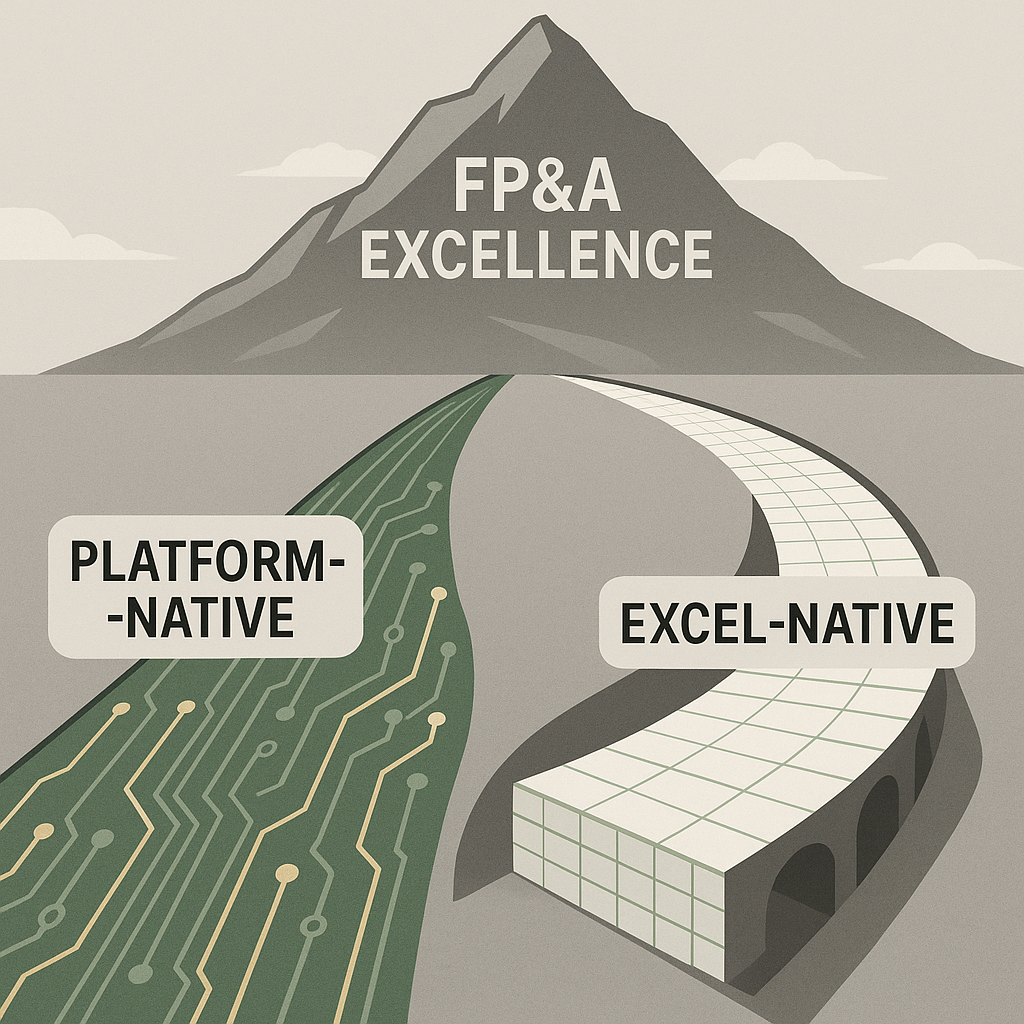
Table of Contents
Leaders in finance often get bogged down in feature-by-feature bake-offs when evaluating FP&A platforms. When it comes to Workday Adaptive Planning versus Vena Solutions, this approach misses the forest for the trees. The choice between these two powerful tools isn’t about which has a better reporting engine or more sophisticated modeling capabilities.
It’s a strategic decision between two fundamentally different philosophies of how a finance team should operate in the modern enterprise.
The Philosophical Divide
Insights distilled from numerous complex system deployments indicate that your selection should mirror your organization’s appetite for change and its existing technological landscape. This isn’t a technical decision; it’s a cultural one.
Workday Adaptive Planning embodies the platform-native philosophy. Its greatest strength lies in its deep integration into the broader Workday ecosystem. For companies already committed to Workday for HCM and core financials, Adaptive Planning offers something increasingly rare: a single, unified source of truth that spans multiple business functions.
The data flows are designed to be frictionless, enabling real-time scenario modeling based on live operational data. Headcount planning automatically pulls from HCM data. Revenue forecasts can instantly incorporate sales pipeline changes. The system doesn’t just store your financial plans; it connects them to the operational realities that drive them.
The challenge? This approach demands that your team abandons its old habits and fully embraces the platform’s way of doing things. It’s a top-down push for architectural purity that can feel restrictive to teams accustomed to spreadsheet flexibility.
The Excel-Native Alternative
Vena Solutions champions the Excel-native philosophy. It operates on a powerful premise: don’t take Excel away from the finance team, supercharge it. Vena overlays the familiar spreadsheet interface with a structured database, robust workflow automation, and comprehensive audit trails.
This approach dramatically lowers the adoption barrier. Finance professionals can continue using the tools and formulas they’ve mastered while gaining the governance and collaboration capabilities they need. The learning curve isn’t about mastering a new interface; it’s about understanding enhanced capabilities within a familiar environment.
The risk? It can inadvertently reinforce an Excel-centric culture, making it harder to fully break away from the offline, siloed thinking that modern integrated platforms are designed to solve. Teams might gain better spreadsheets rather than truly transformed processes.
Strategic Decision Framework
Longitudinal data from transformation projects reveals that successful implementations align the tool’s philosophy with the organization’s change capacity and strategic direction. Forget the feature matrix for a moment and ask these strategic questions about your own organization:
What is our capacity for change? A team resistant to new processes may find Vena’s familiar environment more palatable, enabling them to realize immediate benefits while gradually adopting new methodologies. Conversely, a team eager for a complete overhaul might be ready for the Workday platform approach, which forces comprehensive process transformation.
Where is our center of gravity, technologically? If your organization is heavily invested in the Workday ecosystem, the case for Adaptive Planning’s deep integration becomes compelling. The synergies aren’t just technical; they’re operational. If your landscape is a mix of best-of-breed systems, Vena’s agnostic, Excel-centric approach may offer more flexibility for complex integrations.
What problem are we truly trying to solve? Are you aiming for rapid enhancement of your existing FP&A processes, or are you pursuing a long-term vision of a single, unified enterprise data model that spans all functions? The answer should drive your philosophical alignment.
The Cultural Reality
A perspective forged through years of navigating real-world enterprise integrations suggests that the most critical factor isn’t the software’s capabilities; it’s the match between the tool’s assumptions and your team’s reality. The best FP&A platform is worthless if your organization can’t successfully adopt it.
Workday Adaptive Planning assumes your organization is ready to think in terms of integrated business processes. Vena assumes your organization wants to preserve existing Excel competencies while adding enterprise-grade capabilities. Neither assumption is inherently correct; they’re just different bets about organizational readiness.
Making the Choice
The right answer isn’t about the software itself. It’s about which tool’s philosophy best aligns with your organization’s culture, maturity, and strategic goals. Choosing the wrong one won’t just lead to a frustrating implementation; it will create a constant battle between the tool’s design and your team’s natural working patterns.
This is why the most successful FP&A transformations start with organizational assessment, not vendor demos. Understanding your team’s appetite for change is more predictive of success than understanding a platform’s feature set.
For more discussion on aligning technology with corporate strategy, connect with me on LinkedIn.